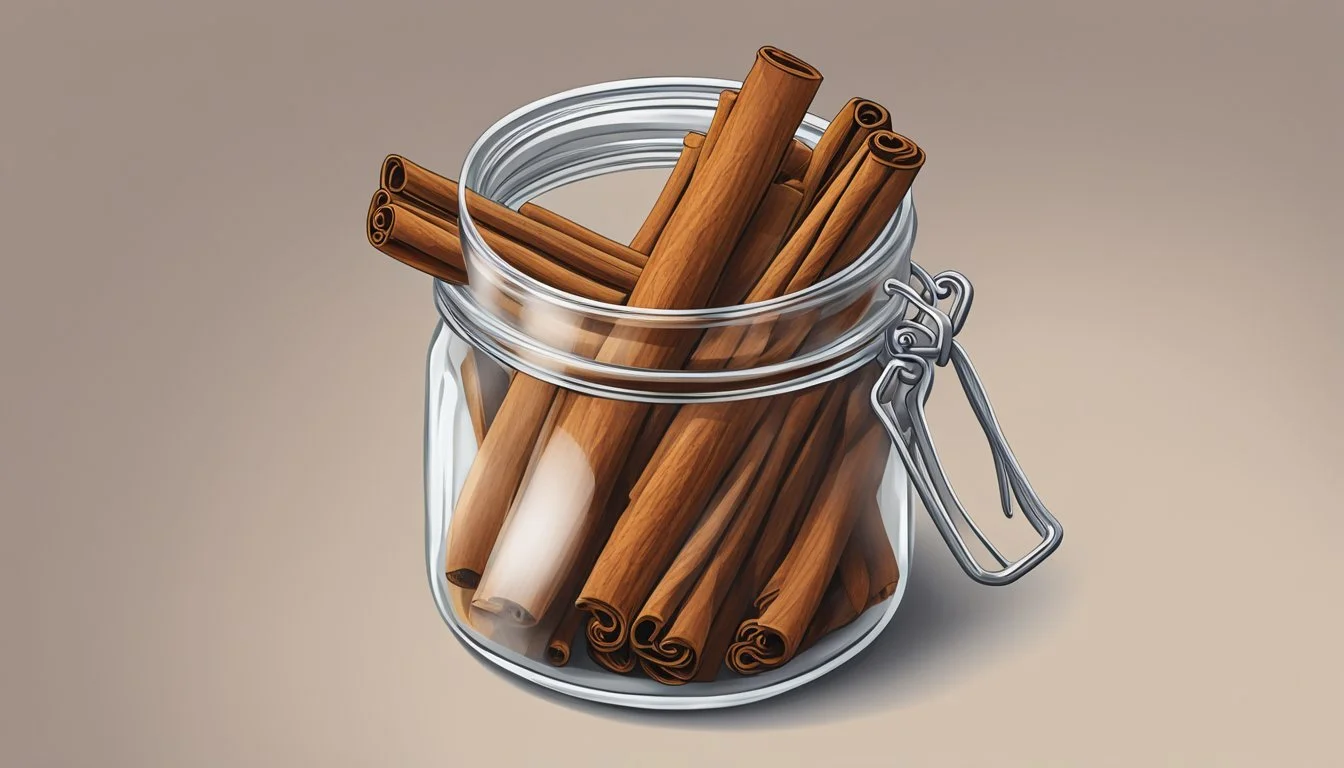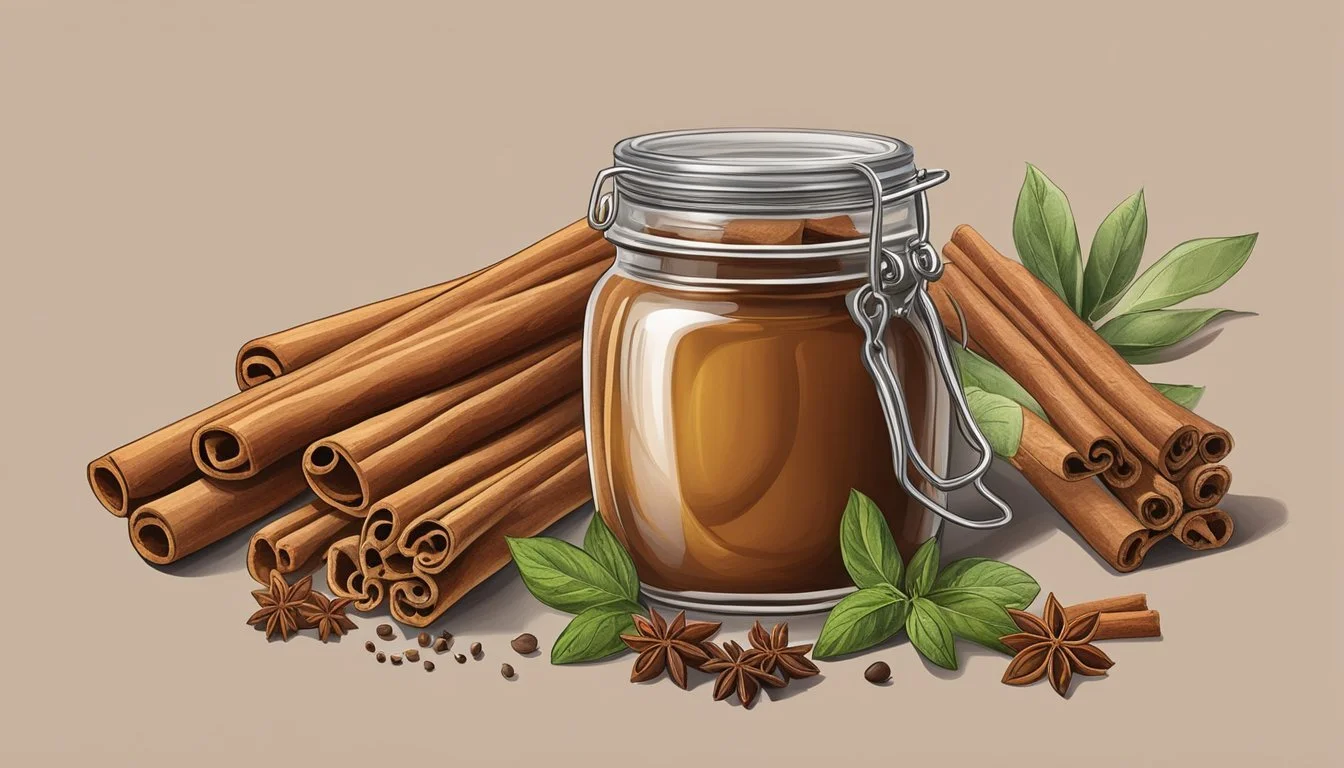How Long Do Cinnamon Sticks Last?
Understanding Shelf Life and Storage Tips
Cinnamon sticks are a versatile and aromatic spice derived from the inner bark of trees from the Cinnamomum genus. They have a long shelf life due to the essential oils that give them their distinct flavor and aroma. When stored under suitable conditions, cinnamon sticks can maintain their best quality for about three to four years. The impressive longevity of cinnamon stems from their dry, hardy nature, which resists spoilage and degradation over time.
The shelf life of cinnamon sticks isn't greatly affected by whether the packaging has been opened, as long as they are stored correctly afterwards. An airtight container in a cool, dark, and dry place is the ideal environment to preserve the quality of cinnamon sticks. Despite their resilience, the potency of cinnamon can diminish over time, with the aroma and flavor gradually fading. However, cinnamon sticks rarely spoil in a way that renders them unsafe to use. Using them beyond their optimal period may result in a milder taste, which can be adjusted for by using a larger quantity in culinary applications.
The Basics of Cinnamon Sticks
In the realm of spices, cinnamon sticks are prized for their prolonged shelf life, robust flavor, and distinct aroma. They are a versatile ingredient in both savory and sweet dishes and carry notable health benefits.
Storage Fundamentals
Proper storage of cinnamon sticks is crucial to maintaining their taste and aroma. They should be kept in airtight containers to protect them from moisture and to preserve their potency. The ideal storage locations include a pantry, spice rack, or kitchen cabinet away from heat and light sources. When stored correctly, cinnamon sticks can last for 3 to 4 years.
Types of Cinnamon
There are two main types of cinnamon:
Ceylon cinnamon, often referred to as "true cinnamon," is milder in flavor.
Cassia cinnamon is more commonly found and has a stronger taste.
Both types should maintain their distinctive flavor profiles when stored appropriately.
Health Benefits
Cinnamon sticks offer several health benefits, primarily attributed to their anti-inflammatory and antioxidant properties. They can help manage blood sugar levels and might contribute to overall wellness. However, these health benefits should not be overestimated, and cinnamon should be consumed in normal culinary amounts.
Maximizing Freshness and Flavor
To ensure that cinnamon sticks retain their best quality in terms of flavor, aroma, and freshness, proper storage conditions are crucial. They should be kept in such a way that minimizes exposure to degrading elements such as moisture, light, and air.
Ideal Storage Conditions
The optimal shelf life of cinnamon sticks can reach 3 to 4 years, but this is dependent on storage conditions that maintain their quality. To keep the spice at its potent best:
Keep it cool: Store cinnamon sticks at room temperature away from any heat sources.
Minimize moisture: Ensure that the storage area is dry to prevent the sticks from getting damp.
Protect from light: Light can degrade the quality of cinnamon sticks, so a cool, dark place is ideal.
Limit air exposure: Use airtight containers to keep out additional air, which can lessen the potency of the spice.
Recognizing Freshness
One can assess the freshness of cinnamon sticks by examining their smell and appearance:
Aroma: Fresh cinnamon sticks should emit a rich, sweet, and slightly spicy scent.
Surface Quality: They should appear firm and intact without any signs of moisture damage or mold.
Indicators of diminished freshness include a dull smell and a lackluster surface, signaling it's time to replace them to maintain the desired quality in flavor and aroma.
Shelf Life and Expiration
When assessing the longevity of cinnamon sticks, one must consider their inherently long shelf life. Stored under optimal conditions, cinnamon sticks can retain quality for years, although ground cinnamon presents a shorter window of freshness due to greater exposure to the elements.
Determining Shelf Life
Cinnamon sticks have a shelf life of 3 to 4 years if kept in a dry, cool place away from direct sunlight. Ground cinnamon typically lasts for 1 to 2 years. The expiration date on the packaging can serve as a guideline, yet cinnamon often remains safe to use beyond this point, although its potency may decline.
Signs of Spoilage
Cinnamon is resilient to spoilage, but if it takes on an off smell, changes color, or shows any signs of mold growth, it has gone bad and should be discarded. Introducing moisture or pantry bugs and insects can lead to spoilage, so properly sealed storage is vital.
Extending Shelf Life
To maximize the longevity of cinnamon, one should store it in airtight containers and place it in a cool, dry area of the kitchen, away from heat sources. The freezer is also an option for extending shelf life, but make sure the container is moisture-proof.
Ground vs. Whole
Ground cinnamon deteriorates faster because it has a larger surface area exposed to the air, leading to quicker loss of flavor and aroma. Whole cinnamon sticks have a longer shelf life due to their compact form, which reduces exposure and maintains quality for a longer period. Regardless of form, both should be checked regularly to ensure they haven't lost their characteristics and remain suitable for recipes.
Utilizing Cinnamon Sticks
Cinnamon sticks offer a unique way to impart a warm, sweet flavor and inviting aroma into a variety of dishes and applications. Their versatility in usage reflects the richness they can add to both culinary creations and alternative settings.
Cooking and Baking
When it comes to cooking, cinnamon sticks are a staple in creating aromatic depth within curries and stews. Their robust structure withstands prolonged simmering, making it easy to infuse flavors and then remove them before serving. Chefs often rely on this spice to add a layer of complexity to both savory and sweet dishes. For optimal quality and flavor release, cinnamon sticks can be ground using a spice grinder or a mortar and pestle just before they are added to recipes.
In baking, cinnamon sticks can be used to steep in liquids to be incorporated into the recipe, providing a subtle yet distinct flavor. From poaching fruits to crafting homemade cinnamon sugar, these sticks serve as more than just an ingredient; they are an essential component of the baking process. The key is to ensure the cinnamon is fresh and stored properly, ideally in air-tight packaging or a metal container to retain its aroma and quality.
Alternative Uses
Beyond the kitchen, cinnamon sticks can be repurposed in various creative ways. They can be added to a cup of coffee for a touch of spice, or ground into powder for uses beyond cooking and baking, such as creating a natural air freshener. Due to their strong fragrance, they are often utilized in crafting unique potpourri mixes or placed in storage spaces for a pleasant scent.
While types of cinnamon sticks vary, they generally maintain their quality over time if stored correctly. Signs that cinnamon
Cinnamon in Different Seasons
The longevity of cinnamon sticks can be influenced by the seasons, as varying conditions such as temperature and humidity can affect storage and quality. Proper storage remains crucial year-round to prevent photodegradation and loss of aroma.
Fall and Winter Uses
In fall and winter, cinnamon becomes a staple in many kitchens, as its warm aroma complements seasonal dishes. During these cooler months, homes are typically heated, which can reduce humidity and potentially extend the shelf life of cinnamon sticks kept on a spice rack. However, these spices should be stored away from direct sunlight and heat sources to prevent photodegradation and preserve their potent flavor. It's not uncommon for cinnamon sticks to be stored throughout these seasons and still retain freshness, as they don't expire quickly if kept in optimal conditions.
Conclusion
Cinnamon sticks, when stored properly, exhibit a remarkable shelf life. Maintaining their quality hinges on keeping them in a dry, cool environment, away from direct sunlight. Their potency and aromatic characteristics are reliable indicators of their condition.
Final Thoughts
Individuals assessing the longevity of cinnamon sticks should note that their typical shelf life spans from 3 to 4 years. The scent of cinnamon is a clear sign of its freshness—the stronger the smell, the better the quality. Users are advised to rely on airtight containers for storage to preserve the sticks' robust flavor and distinctive aroma.







